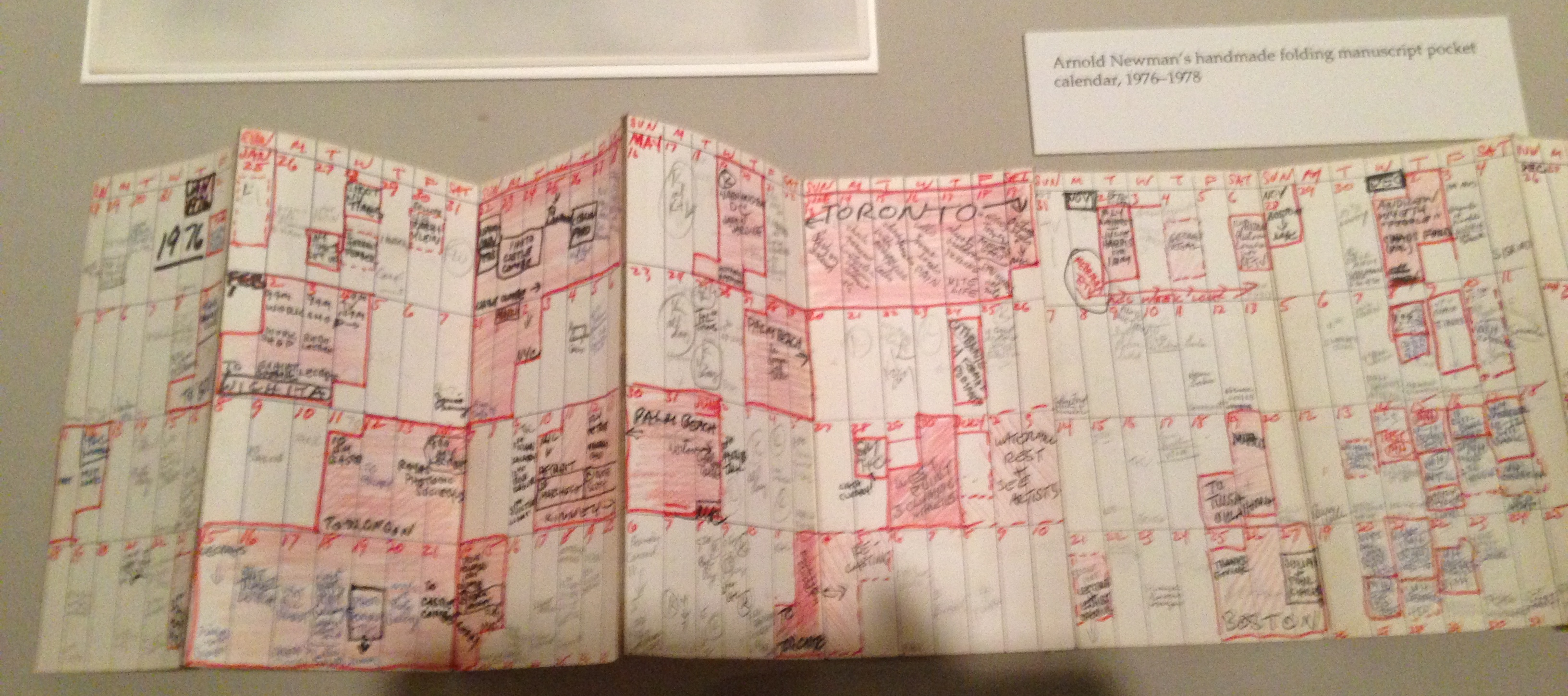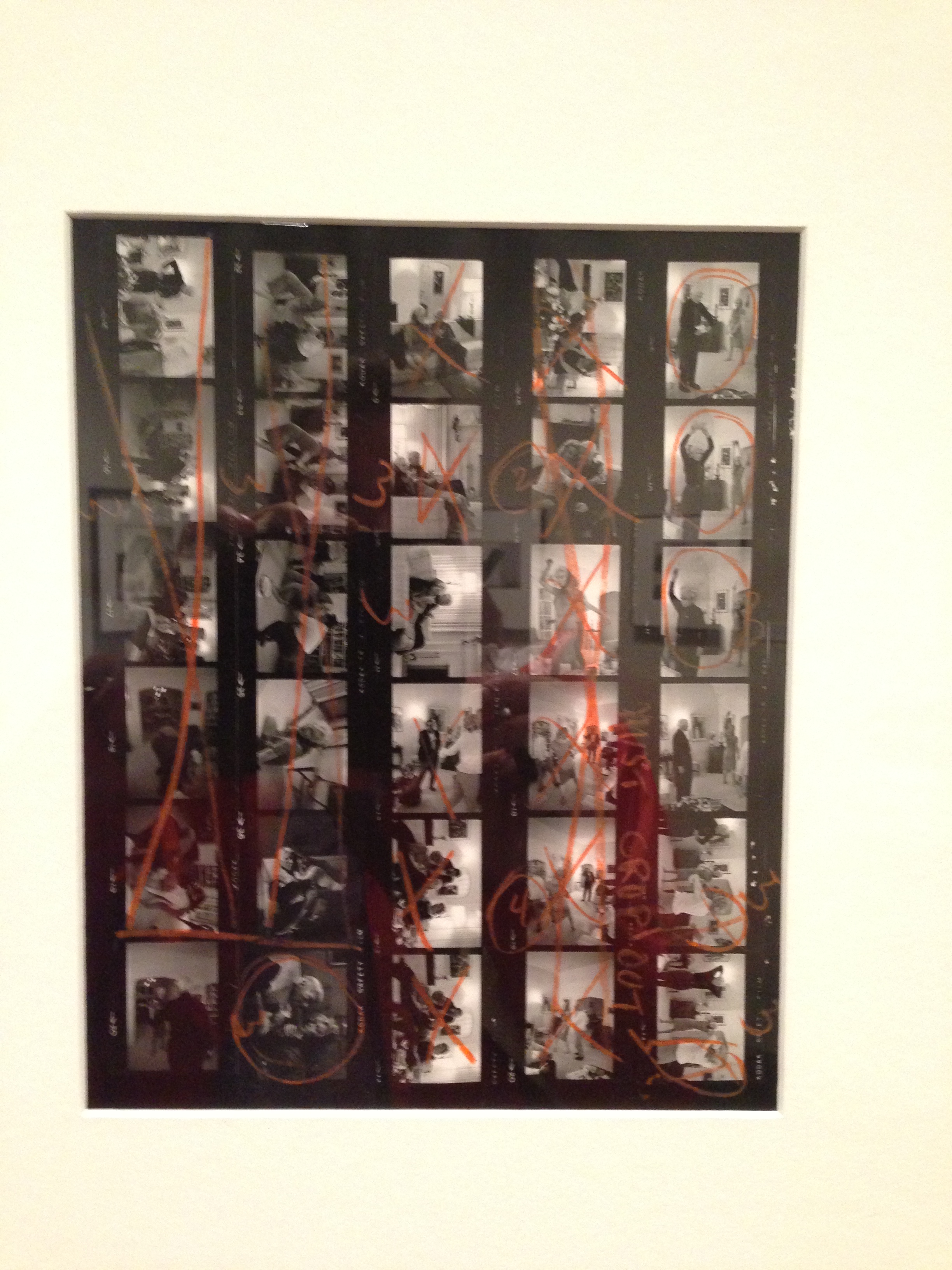
Image Credit: Photo from Arnold Newman Exhibit, Harry Ransom Center, taken by author; protected under Fair Use.
On February 12th, the traveling exhibition Arnold Newman: Masterclass began a four-month stop at UT’s esteemed Harry Ransom Center. As Newman was a prolific photographer with a strong belief in the instructional potential of photographs, the chance to see his life’s work first-hand was nothing short of spine-tingling to those of us with an unusually strong interest in visual culture and artifacts, especially when they have pedagogical implications! (Pretty dorky, I know.)
Newman’s artistic output is as extensive as it is brilliant. His photos of ordinary folks, as well as those of the rich and famous all seem to demonstrate Newman’s singular ability to capture what I would call “authenticity.” He managed to capture the humanness of his human subjects. Along with the fact that Newman enjoyed photographing subjects spontaneously (especially his subjects of the celebrity variety) and without preparation or posing, Newman’s photos all feel like they have about a hundred small nuances to them, the sum total of which were photographs that seemed…real. That is, accurate representations of individuals and localities as they truly were. He dismissed outright any assertions during his career that the ease with which one could take- and duplicate- a massive quantity of photographs somehow detracted from the legitimacy of any particular copy as the “authentic” (that word again) work product. I suppose one can only speculate as to what Newman’s opinion would have been towards an age where photographs can be duplicated infinitely and effortlessly, and where such photos can be endlessly edited by just about anyone.
Another reason viewing Newman’s photographs conveys the feeling that one is viewing people and places “as they really are” is the fact that Newman frequently took many shots of the same subject. For example, the exhibit contained a series of photographs of Marilyn Monroe, in which she appears to be making her way around a party. She seems oblivious to the fact that Newman is studying her, which is precisely how he manages to produce photographs that seem so revealing. The sequence of photos depict Marilyn with the smiling, charming look on her face for which she was known (and with which she is still equated), as she moves from conversation to conversation among various, anonymous, partygoers. In the middle of his string of shots showing Marilyn schmoozing are several amazing shots where she has found herself outside of the crowd. It is in those shots that Newman manages to capture a profound sadness in her face that the rest of the room never noticed. If you’ll excuse my bright orange reflection in the glass, you’ll see what I mean below:

Image Credit: Photo from Arnold Newman Exhibit, Harry Ransom Center, taken by author; protected under Fair Use.
Each of Newman's photographs is a work of art in itself. Additionally, taking the sequence in its totality- watching the transformation in the face of his subject- creates the feeling that you are viewing a truly authentic depiction of his subject(s). Again, I’ve had to rely on my own photos of photos to illustrate this posting, but hopefully the below gives some idea as to the way Newman would take a long sequence of photos of a single subject, later looking at them in their totality (the handwritten editing notes are his).

Image Credit: Photo from Arnold Newman Exhibit, Harry Ransom Center, taken by author; protected under Fair Use.
To end by talking about the photo I began with (all the way up top), I was amazed by some of the evidence of Newman’s life and personality external to any of the photography he left us. The picture at the top of this posting is part of a two-year section of a detailed calendar and record of every photo shoot Newman undertook during his career. He was meticulous in his record keeping, with his calendar always with him. For a guy with a career covering nearly seven decades, I found his bookkeeping skills nearly as impressive as his photography.
The opinions expressed herein are solely those of viz. blog, and are not the product of the Harry Ransom Center.



Recent comments
2 years 29 weeks ago
2 years 44 weeks ago
2 years 44 weeks ago
2 years 50 weeks ago
3 years 4 weeks ago
3 years 4 weeks ago
3 years 4 weeks ago
3 years 6 weeks ago
3 years 6 weeks ago
3 years 6 weeks ago